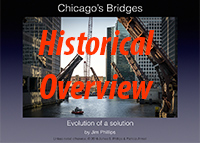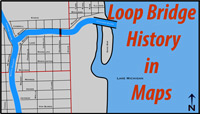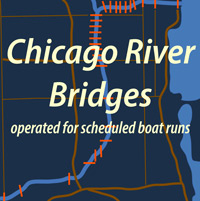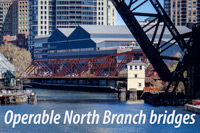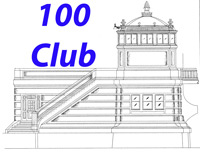
Elevation drawing of the W. Madison St. Bridge (Courtesy of CDOT Division of Engineering)
November 29th marks the anniversary of the opening of the current bascule bridge at W. Madison St. The design process, which began in 1913, was complicated by the proximity to Union Station and the railroad tracks along the west bank. The city decided to complete the bridges at Jackson Blvd., Lake St., and Monroe St. first. Construction on this bridge began in 1920.
The key players for the construction and design of the bridge are summarized on the bridgehouse plaque. These individuals and organizations were active on most of the bridges built between 1913 and 1930 – the bridge era most influenced by the 1909 Plan of Chicago.
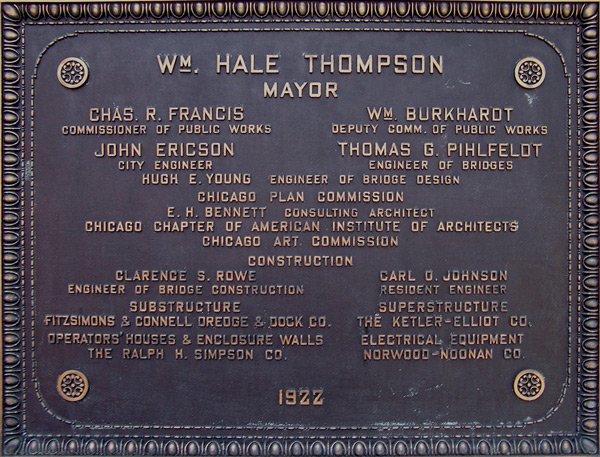
The ideal bridge aesthetics during this period dictated that deck support be placed below street level where possible. This bridge is the first bridge to implement the rail height truss, an innovation that satisfied aesthetic and structural requirements.
While the current bridge celebrates 90 years, this crossing is one of the six downtown crossings that has been in use since the 1840's. In this time, the crossing has seen the three major types of movable bridges that mark Chicago's bridge history. The first bridge type was a movable pontoon bridge, followed by swing bridges, the last of which was replaced by the bascule in place today.
Because it is located near both Union Station and the Olgilvie Transportation center, this bridge is one of the busiest pedestrian crossings downtown. Approximately 42,000 people make their way over the span each day.
When this bridge was opened in 1922, Chicago was still a busy port. In the early years, this bridge was raised approximately 2,500 times per year. Now it's raised about 50 times per year for the annual sail boat migration to and from Lake Michigan. It is estimated the bridge has been raised approximately 48,000 times in its 90 year history.
This bridge was officially christened “Lyric Opera Bridge” at a ceremony on January 26, 1989 commemorating the 35th season of the Lyric Opera of Chicago. According to the Chicago Tribune, 2,200 silver balloons were released as Wagner's “Ride of the Valkyries” played during the eight minute outside portion of the celebration.
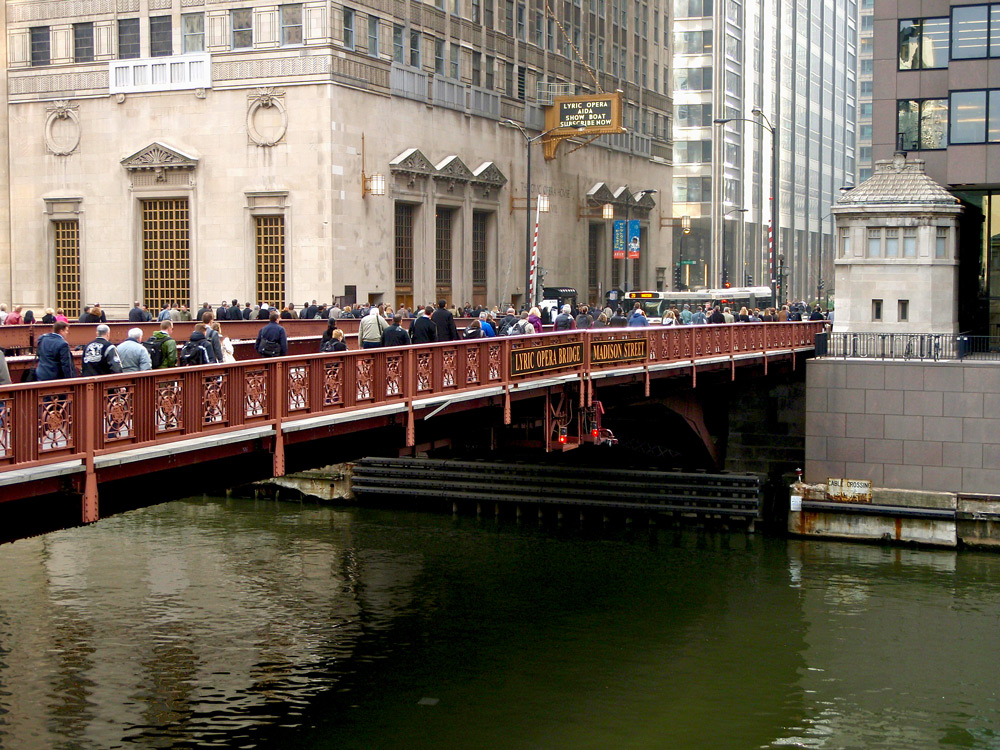
The Lyric Opera Bridge during the morning rush

